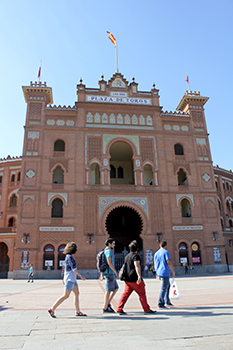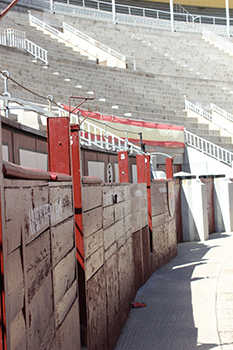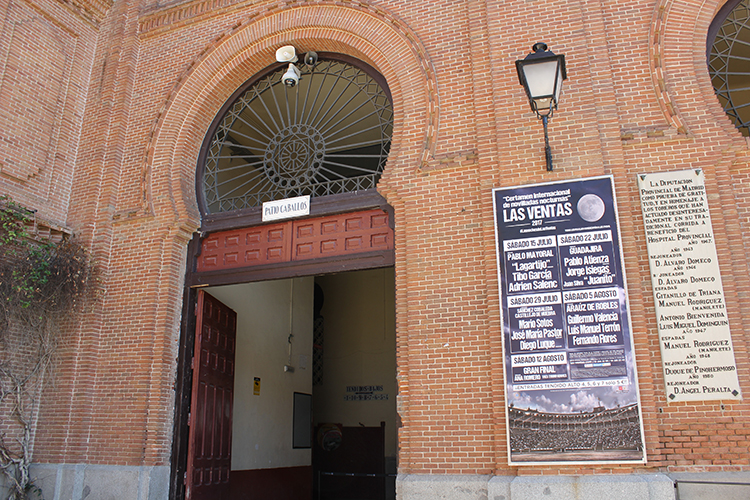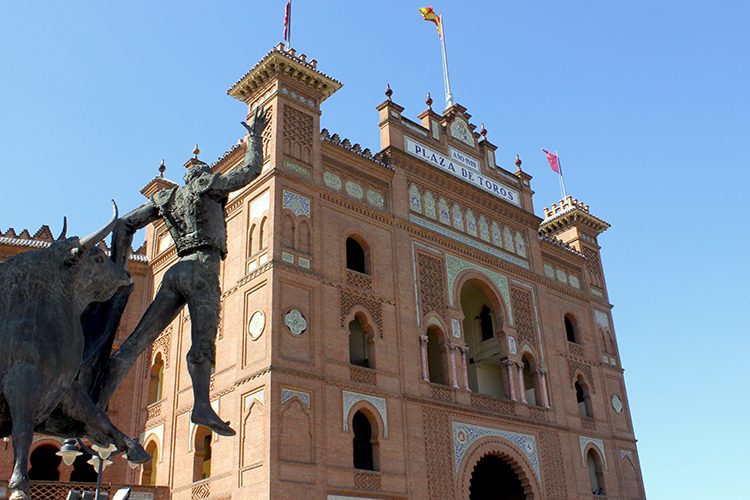If you love bullfighting as much as I do, then you will find it hard to hear whenever someone gives you the typical “bullfighting is dying” speech. But, is bullfighting really dying?
Bullfighting has been in decline for the last years, and this has been due to both to the fierce opposition, mainly from the Spanish political party working for animal rights known as PACMA, and second, the economic crisis of the country, leading to less financial support from the government and less people attending the bullfights due to the expensive price of the tickets.
Spain’s Ministry of Education, Culture and Sport reported in 2016 there were 1,598 bullfights in Spain, a decline of 7.9% from 2015. Other reports by the same ministry said that based on a sample of 16,000 people aged 15 and over, only 9.5% of the population analyzed attended bullfights in the past year.

Millennials arriving to Las Ventas bullfighting plaza | Sofia Merizalde
Despite the general decline, for the last years, I’ve been hearing about this so called millennial boom surrounding the world of bullfighting and “Foro de la Juventud Taurina (FJP),” a group of young aficionados, is one of the main reasons. This group of young people founded the forum in 2008, with the goal of sharing the values of bullfighting among the younger generations, and over the last 5 years, they have witnessed the largest interest towards bullfighting from younger crowds.
FJT has inspired the creation of many other newer related groups, something hopeful for the world of bullfighting, whose image is often associated with old traditions.
There is a large group of millennials who are interested in the Spanish fiesta and want to keep the tradition alive, recalls Felipe Mansilla, president of FJT. They work based on the idea that bullfighting doesn’t have to be defended, it has to be taught, and as millennials themselves, FJT understands that when dealing with younger people, the key lies in sharing messages in a dynamic, attractive and innovative way. “We started to take bullfighting traditions to the streets, doing bullfighting events in Temple Debod, Palacio de Oriente, and Plaza Mayor (Madrid cultural landmarks),” remembers Mansilla. They also got “La empresa de Madrid” (Madrid’s main bullfighting festival representatives) to offer youth season tickets with a cheaper price, more accessible for young people. They went from selling 81 youth season tickets the first year, to 300 last year and this year more than 800.

First alley inside Las Ventas | Sofia Merizalde
Social media has also served as a great boost in their favor. To date, they have a following of 33,000 people, quite impressive for an independent group of young aficionados with no official support from any big entities. This platform helps them spread real images of bullfighting, it educates the younger generations on what makes up this tradition, and it is all done in a very organic manner, from youth to youth, no manipulation of information in between.
Mansilla also says that despite the multiple attacks from various animal rights groups, the millennial boom has gained force because young aficionados are not afraid of saying: “I go to bullfights”, and have also understood that the best way to defend the “fiesta of the bull” is to attend the festivals without fear and with pride.
While many claim only older people are interested in bullfights, official reports like the one mentioned above, millennial movement groups like FJT, and my recent trip to Pamplona’s annual San Fermín festival and Madrid’s main bullfighting plaza, Las Ventas, prove those are only accusations.
Only 4 months ago, FJT celebrated the 9th edition of their annual “Gala of Juventud Taurina.” The 1,000 invitees got together to celebrate and reward the efforts of those who contribute daily to the Spanish fiesta.
Just one month ago, Madrid’s bullring “Las Ventas,” announced the “Night in Las Ventas:” 4 novilladas (a bullfight with smaller bulls, fought by younger bullfighters) taking place at night every Saturday from July 15 to August 12. And because they are at night, there’s no division in the bullring between sun and shade tickets (shade tickets being much more expensive), therefore all tickets are cheaper.

Poster for “Night in Las Ventas” on the bullring’s wall | Sofia Merizalde
And while being in Madrid, after hearing the success of the first one, I couldn’t help but go for the second one. Partly, I also wanted to experience the bullfighting scene in Las Ventas, and see for myself this so called millennial boom I was hearing about.
When I arrived I was completely shocked by the number of people, I never thought the bullring could be almost half full, considering it is not prime bullfighting season in Madrid. As I was standing by a small stand that sold bullfighting souvenirs, I met this guy who told me he bought tickets for the 5 nights to come along with his friends. Miguel Garcia is 22 years old and despite living all of his life in Madrid, says his friends have been inviting him recently to bullfighting festivals. “I came to Las Ventas this past May to San Isidro (Madrid’s main bullfighting festival), I was this week in Feria de Julio at Valencia (that Mediterranean city’s summer bullfighting festival) and have been coming for the weekends to these novilladas” says Garcia.
On the other hand, his friend Mateo Villa, recalls ever since he was a small child, he has gone to bullfights, especially to Las Ventas. Still, he says you don’t have to go to bullfights as a child to like them as an adult, you can acquire the “passion for la fiesta” from other friends who share it with you, and that’s what he has been doing with some of his own: “I have been sharing more about bullfighting with some of my friends, about the life of the bull, how he is raised… been teaching them about the ritual and the meaning behind an art that is so unknown to many, yet so close to others”.
As I leave Las Ventas I could see for myself most of the spectators at the event were very young, in fact, I could say there was a millennial boom in Las Ventas.
Travel Journalism, Photography & Video Internship Seminar in Madrid, Spain

